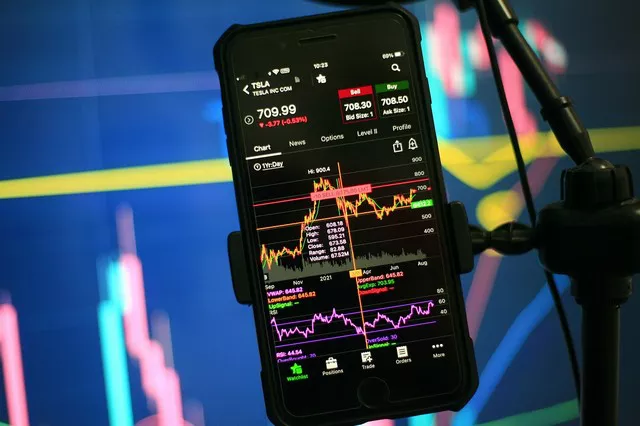Futures trading, a sophisticated financial instrument, has captivated the attention of investors seeking opportunities to profit from price movements across various asset classes. Whether trading commodities, currencies, or cryptocurrencies, futures markets provide a platform for traders to speculate on future price directions. In this article, we will delve into the strategies employed by futures traders to navigate these dynamic markets and generate profits.
Understanding Leverage in Futures Trading
One key element that sets futures trading apart is the use of leverage. Leverage allows traders to control a more substantial position size with a relatively smaller amount of capital. While leverage magnifies potential gains, it also amplifies the risk of losses. Futures traders can employ leverage to their advantage by strategically managing their positions, using it to maximize profit potential while maintaining a keen awareness of risk.
Risk Management: A Cornerstone of Profitable Trading
Successful futures traders recognize that effective risk management is a cornerstone of long-term profitability. Risk management involves setting clear guidelines for position sizing, defining acceptable levels of loss, and implementing protective measures such as stop-loss orders. By diligently adhering to risk management strategies, traders can protect their capital and ensure that losses are controlled, even in the face of market volatility.
Technical Analysis: Deciphering Price Charts
Technical analysis is a fundamental tool in the arsenal of futures traders. By studying price charts, identifying patterns, and utilizing technical indicators, traders seek to make informed predictions about future price movements. Recognizing trends, support and resistance levels, and chart patterns can provide valuable insights for entering and exiting trades strategically. Technical analysis empowers futures traders to make decisions based on historical price data and market trends.
See Also: How to Buy & Sell BNB Futures on Binance?
Fundamental Analysis: Digging Deeper into Market Drivers
While technical analysis focuses on price patterns, fundamental analysis delves into the underlying factors that influence market movements. Futures traders examining commodities, for instance, may consider supply and demand dynamics, geopolitical events, or economic indicators that impact the market. A nuanced understanding of fundamental factors can provide traders with a comprehensive view, helping them anticipate and capitalize on potential market shifts.
Trend Following Strategies: Riding Market Momentum
Trend following is a popular strategy among futures traders seeking to profit from sustained market movements. Traders employing this strategy identify and follow established trends, entering positions in the direction of the prevailing market momentum. Trend followers often use moving averages, trendlines, and momentum indicators to confirm the strength and direction of a trend, enabling them to ride the wave of market momentum for potential profits.
Contrarian Strategies: Profiting from Reversals
Contrarian strategies involve taking positions against prevailing market sentiment, anticipating a reversal in price direction. Futures traders utilizing contrarian approaches believe that markets are prone to overreaction, leading to corrections or reversals. This strategy requires a deep understanding of market sentiment and the ability to identify potential turning points. Contrarian traders may use indicators like RSI (Relative Strength Index) to identify overbought or oversold conditions as signals for potential reversals.
Arbitrage Opportunities: Exploiting Price Differences
Arbitrage is a strategy where traders exploit price differences between related assets or markets to generate profits. Futures traders may engage in spatial arbitrage, taking advantage of price differentials for the same asset in different locations. Temporal arbitrage involves capitalizing on price variations over time, often in response to news or events. Successful arbitrageurs leverage technology and sophisticated trading algorithms to execute trades swiftly and capitalize on fleeting opportunities.
Spread Trading: Managing Market Relationships
Spread trading involves taking positions in two or more related futures contracts to profit from changes in the relationship between their prices. Futures traders engaging in spread trading may execute calendar spreads, where they take opposite positions in futures contracts with different expiration dates. Inter-market spreads involve trading related contracts on different exchanges. By carefully managing these relationships, spread traders seek to profit from price differentials between the contracts.
Options Strategies: Hedging and Generating Income
Options, a derivative of futures contracts, provide traders with additional strategies for profit. Some futures traders use options to hedge against potential losses in their futures positions, while others employ options to generate income. Covered call writing, for example, involves selling call options against a long futures position to generate premium income. Options strategies add versatility to the toolkit of futures traders, allowing them to tailor their approach to different market conditions.
Algorithmic Trading: Harnessing Automation
The rise of algorithmic trading has transformed the landscape for futures traders. Algorithmic or automated trading involves the use of computer algorithms to execute trades based on predefined criteria. These algorithms can analyze market data, execute trades at high speeds, and adapt to changing market conditions. Automated trading systems allow futures traders to implement complex strategies, manage risk, and capitalize on opportunities with speed and precision.
Market Sentiment Analysis: Gauging the Mood of the Market
Understanding market sentiment is a crucial aspect of futures trading. Traders often analyze sentiment indicators, news, and social media to gauge the mood of the market. Sentiment analysis helps futures traders anticipate potential price movements and position themselves accordingly. Contrarian traders, in particular, may seek opportunities when market sentiment reaches extremes, betting on a potential reversal.
Continuous Learning and Adaptation: A Dynamic Approach
In the ever-evolving landscape of futures trading, successful traders adopt a mindset of continuous learning and adaptation. Markets change, and strategies that were profitable in one environment may need adjustments in another. Staying abreast of market developments, technological advancements, and refining strategies based on experience contribute to the ongoing success of futures traders.
Conclusion
In conclusion, the profitability of futures trading is achievable through a multifaceted approach that combines strategic analysis, risk management, and a nuanced understanding of market dynamics. Futures traders deploy a variety of strategies, from trend following and contrarian approaches to arbitrage, spread trading, and options strategies. Adapting to market conditions, staying informed, and continuously refining one’s approach contribute to sustained success in the dynamic world of futures trading.


